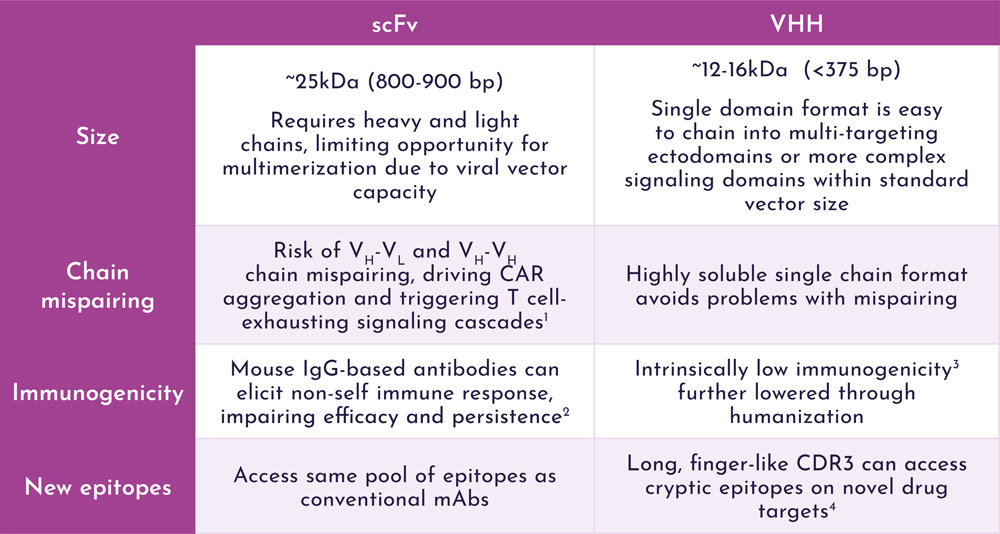VHH in
Cell Therapies
Small, stable and robust, VHH offer an attractive construct for incorporation as targeting agents in cell therapies.
VHH can also be easily multimerised to meet a variety of therapeutic needs, enabling refined cell targeting and modes of action while also minimising off-target toxicity. Away from the ectodomain, their small size also permits packaging of more sophisticated intracellular signalling domains, supporting the next generation of cell therapies.
Advantages of
VHH in Cell Therapy

Smaller constructs mean more space for multi-specific targeting modules or next-generation signalling domains.

References:
1. Jayaraman J et al. (2020) Ebiomedicine 58: 102931
2. Lamers CH, et al. (2011) Blood 117(1):72-82
3. Ackaert C et al. (2021) Front. Immunol. 12: 632687
4. Desmyter A et al. (1996) Nat Struct Biol 3(9): 803-811

Isogenica’s
VHH in CAR-T Resources
Using synthetic VHH to optimize T-cell mediated immunotherapies
In this webcast, speakers will introduce the unique benefits of the VHH antibodies generated from the LlamdA™ synthetic library and summarize how VHHs can be engineered to tune their binding selectivity and specificity and help optimize the next generation of cell therapies.
Whitepaper: Clinical landscape for VHHs in immunotherapies
This whitepaper summarises the clinical and research landscape for CAR-T and T-cell engaging antibody therapies and show how single domain VHH antibodies can be applied to optimise the next generation of these important new therapeutic modalities.
Publication: AAV delivery of VHH Intrabodies
De Genst et al showcase the AAV delivery and intracellular in vivo expression of Isogenica’s LlamdA™ VHHs in monomeric and bivalent forms. Interestingly, these VHHs display preferences for distinct conformations of their target – phospolamban.
Partnerships at Isogenica
Isogenica’s partnerships with global biopharmaceutical companies have resulted in a deep pipeline including one clinical Phase II asset and eleven partnered pre-clinical and discovery programs.










